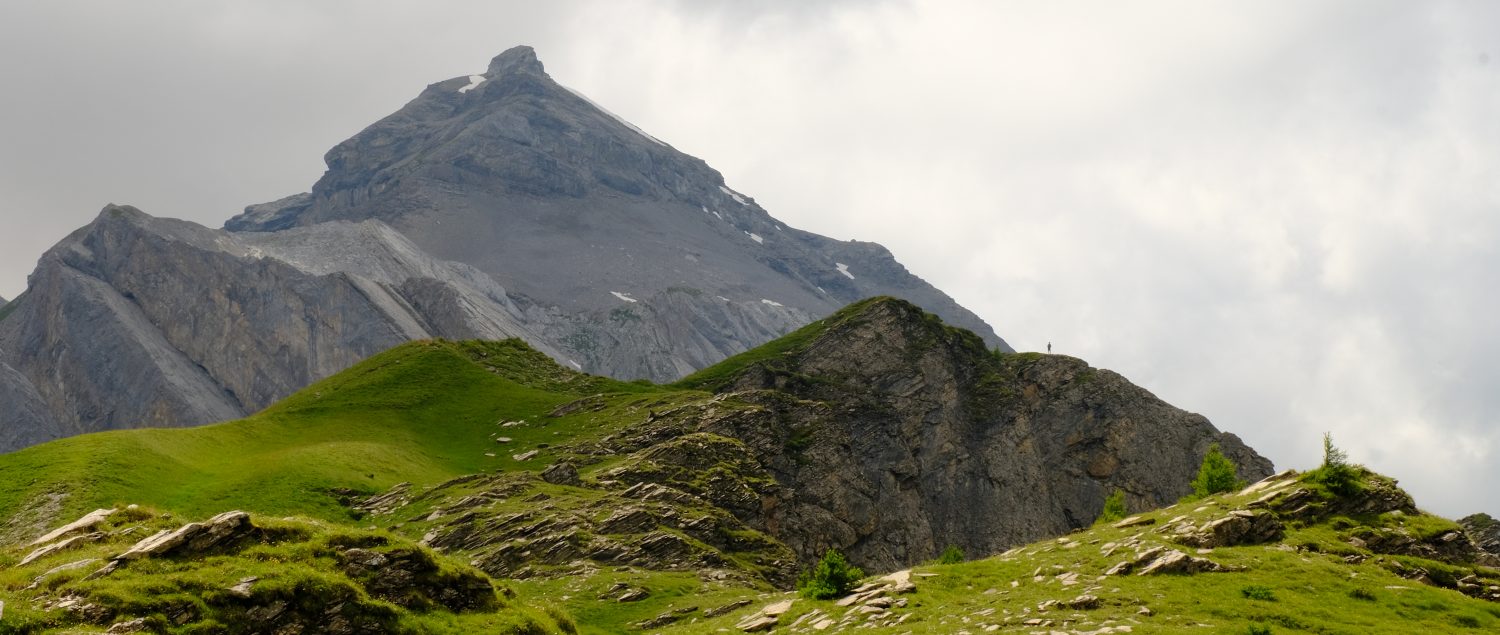You’ve booked your first guided walking holiday in the European Alps. Fantastic! But what kit do you need? Don’t worry, assuming you’re a UK hillwalker you should have most of the equipment already. Walking in the Alps in the summer though can take you into a harsher environments at a higher altitude than you might be used to. Even in the summer late lying (or fresh!) snow may also be encountered but your guide will not take you to places where specialist snow kit is needed.
Here are a few tweaks I’ve picked up over my years as an International Mountain Leader and my work in specialist independent outdoor shops.
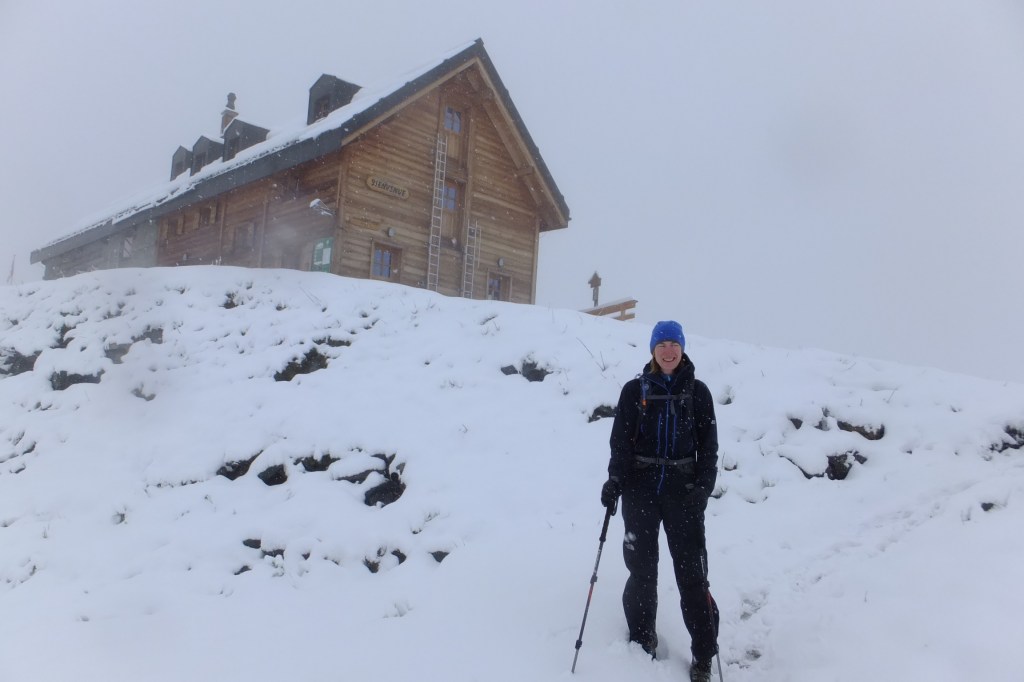
Photo Credit: Nick Haine
And 8 days later, just 40km due east…
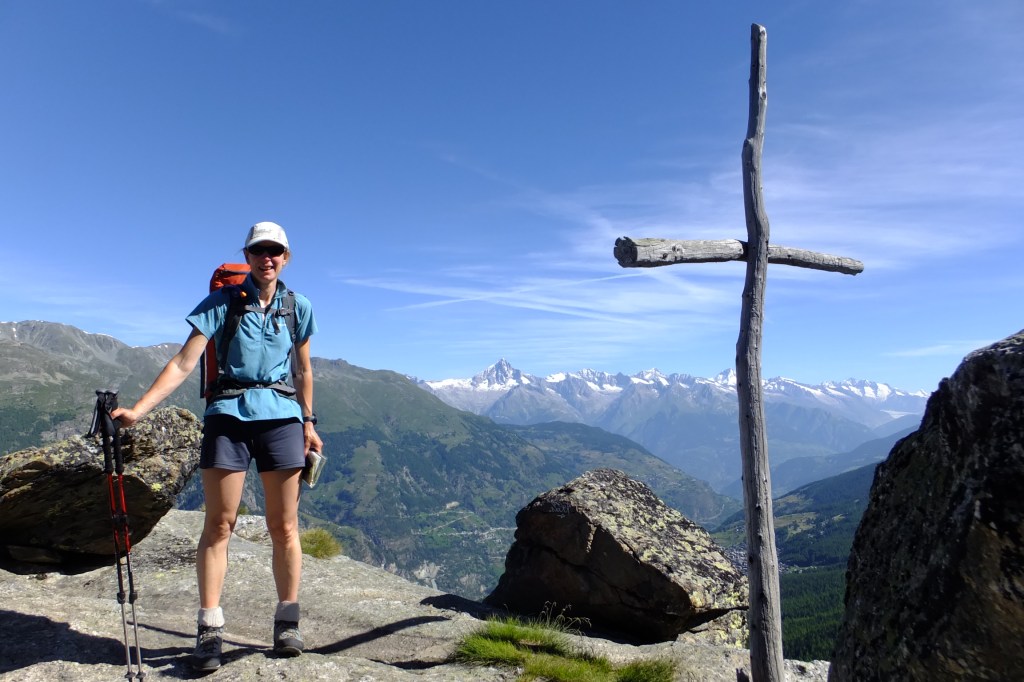
Photo Credit: Nick Haine.
The essentials
Rucksack: Imagine you started walking on a cold rainy morning wearing your woolly hat and gloves, wrapped up in all your waterproofs. After a long ascent you emerge above the treeline directly under the searing midday sun. Your rucksack needs to be able to hold all the kit you started out in, plus your water container(s), lunch and the other essentials detailed below. The kit for a petite woman will obviously pack down smaller than a larger man’s, and specialist lightweight waterproofs will pack down smaller than robust everyday ones. It is worth gathering your kit into a pile to see how much space you’ll need before choosing which rucksack to use / buy.
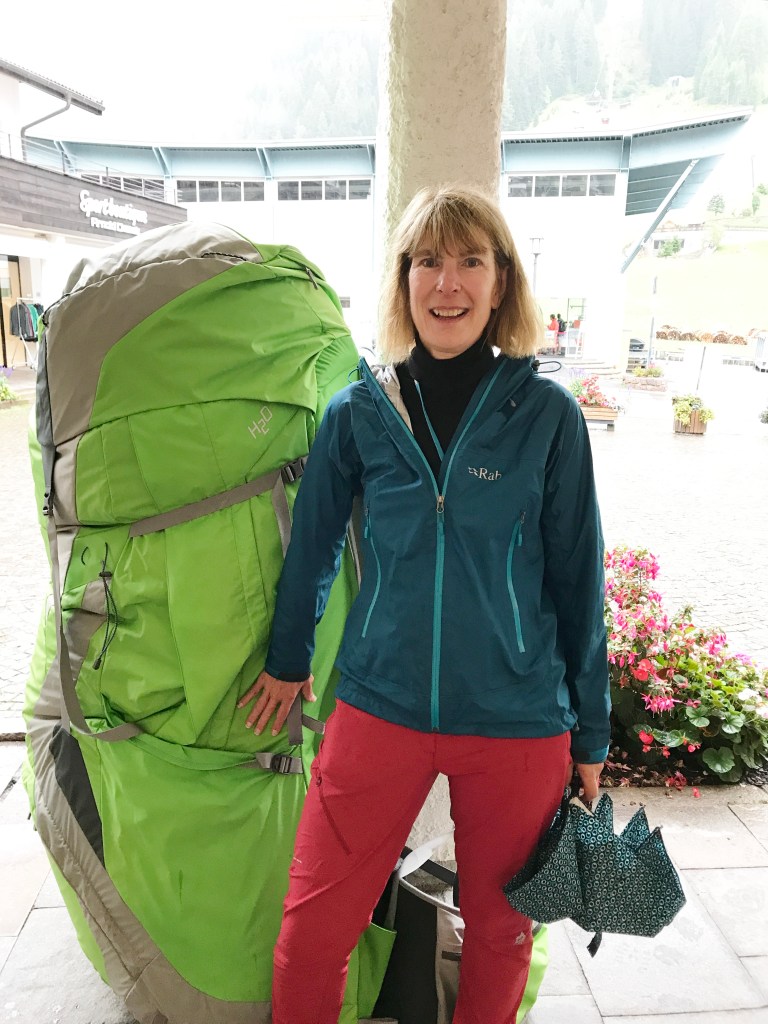
A good place to start is about a 30 litre capacity rucksack but, despite this being a standard way of measuring size, different brands vary hugely. It is best to try a selection of rucksacks on in a specialist shop that has weighted beanbags they can place in the rucksack. Back length, shoulder width, the shape of your hip girdle etc can hugely influence how comfy a rucksack feels.
Rucksack liner: Even if your rucksack comes with a raincover it’s always worth using a waterproof liner as well. You can buy them from outdoor shops or copy me and use a medium sized rubble bag (a very tough bin bag) bought from a DIY shop.
Don’t be a ‘Showroomer’ when shopping! Specialist outdoor shops spend time and money training their staff to give you good advice. Because they have bricks and mortar shops to maintain they may not be able to exactly match the prices of online only retailers. If you’ve spent half-an-hour trying on different kit with a sales assistant isn’t it fair that you acknowledge the cost of that advice by buying the item there? If everyone ‘showrooms’ then we’ll only have online purchasing left!
Footwear: Most of us benefit from the ankle support provided by boots for alpine walking. Waterproof boots are more versatile for different weather conditions and handier back in the soggy UK. Stiffer boots (gently bend the toe of the boot back towards the laces, and gently twist the toe and heel of the boot away from each other to find out how rigid a boot is) will support the foot better and help you to balance on rocky paths or patches of snow. You don’t need very stiff crampon compatible boots though (sometimes referred to in the UK as B1, B2 or B3 boots), the key thing is comfort and fit. Make sure you’ve covered a good number of miles in the boots you take along (but not so many that the soles are worn shiny!). If you regularly go trail running / fell running on rough terrain then approach shoes / mountain trail running shoes could be used. These have grippier, more cushioned, harder wearing soles than standard running shoes.

Photo Credit: Nick Haine
Waterproof jacket: This needs to be properly waterproof, not just shower-proof. The waterproofness of a fabric is rated through a measurement known as the hydrostatic head. A column of water (or a simulation of this) is placed on the fabric and increased until water penetrates through. A waterproof jacket should have a hydrostatic head of at least 10,000mm, many will have a rating of 20,000mm. Most waterproof jackets bought from UK outdoor shops will meet this specification.
Waterproof trousers: Again these need to be properly waterproof, but if you want to spend wisely you can buy a cheaper brand of waterproof trouser. The jacket will protect the body’s core more than the trousers do, so the money is best spent there.
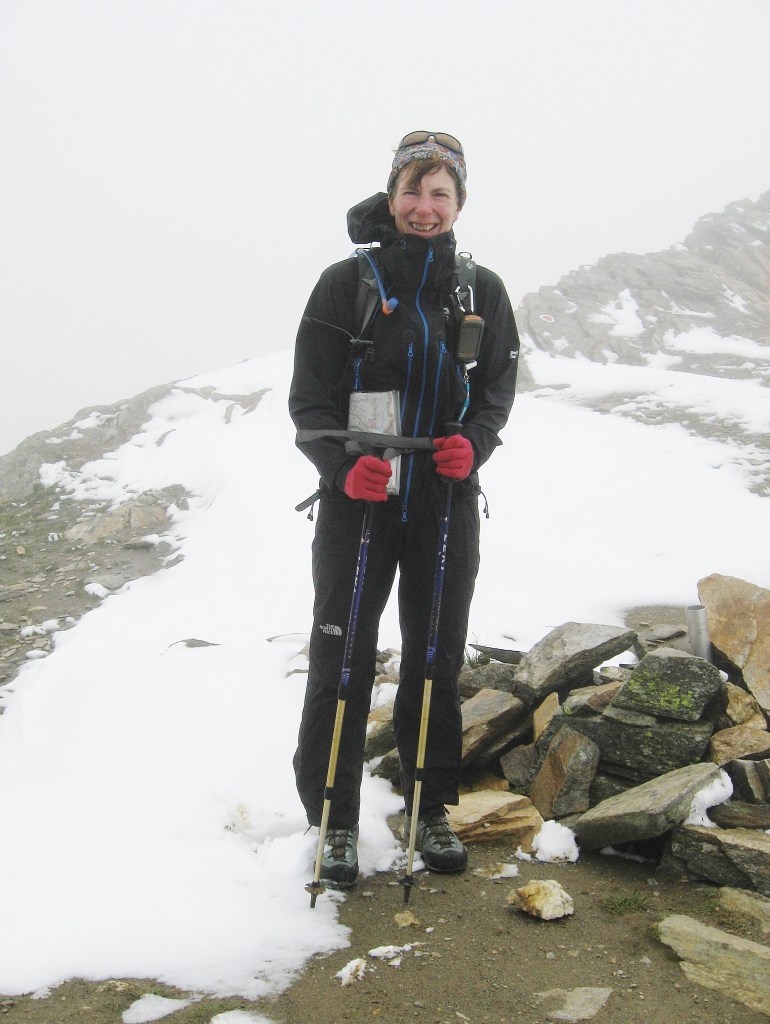
Wide-brimmed hat / baseball hat and neck covering: Preventing your head from cooking in the sun is a key component of avoiding heatstroke. A well fitting wide-brimmed hat is the best as it will shade your face and neck as well. If you feel a bit daft in that (as I do) a baseball hat with a nice long peak is great teamed with a cotton bandanna or an upturned shirt collar to protect the neck.
Sunglasses: UV radiation increases by 10% for every 1,000m of height gain due to the loss of density of atmosphere. If you plan on heading into the mountains regularly it is worth buying sunglasses with category 4 lenses. Watch out though, you are usually advised that you can’t drive wearing these.
High SPF sunscreen and lipscreen (e.g. 30SPF): the NHS currently advises reapplying sunscreen every 2 hours so bring these along on the walk.

Photo Credit: Nick Haine
Water container(s): On a long hot day walking above the shade of the treeline, with no mountain huts en-route I take 2 litres of water with me, and sometimes that hasn’t felt enough. Bring two one litre water bottles or alternatively you can buy a ‘hydration pack’. This is a ‘bag’ you fill with water that has a tube attached so you can sip as you walk. I find I stay much better hydrated with this, but on a group walk it’s easy enough to pass water bottles to each other and most rucksacks have a handy external pocket they can sit in.
Food: Even if you’re planning to stop at a mountain hut for lunch pop a few snacks in your rucksack, you might need a little energy boost to tackle the last descent of the day.

Photo Credit: Nick Haine
Spare warmth layer: e.g. a second fleece, a gilet or a thin insulated jacket. The thinner atmosphere higher in the Alps results in more pronounced extremes of temperature. This variation could happen between a cold night and a boiling hot midday, a dramatic temperature fall after a thunderstorm or a cold weather front moving across the alps. I always think of the spare warmth layer as an emergency warmth layer. For example this might be whilst sitting together as a group for a couple of hours in the rain with someone who has twisted their ankle waiting for the mountain rescue to turn up.
If you fancy buying a really useful bit of kit, for both the UK and overseas, a light synthetic insulated jacket is really useful, like the one below. Light down jackets are also good but even those with water repellent down need to be protected in the rain.

Photo Credit: Nick Haine
Woolly hat
Gloves
Basic personal first aid kit: Large blister plasters (I’m a real fan of Compeed), a few ordinary plasters and antiseptic wipes, a small stretchy bandage, Paracetamol / Ibuprofen (whichever works best for you, please remember first aiders, such as your hiking guide, can’t give you any drugs).
Personal medication: e.g. asthma inhalers, angina tablets / spray.
Headtorch: For hands free walking if an emergency occurs and the group has to walk back in the dark. These are also very handy after the walk in quiet alpine villages with limited street lighting.
Spare batteries for the headtorch: It can be fiddly swopping torch batteries over and I think I’d only be doing this out on a walk if things had gone badly wrong. For that reason I take a small emergency spare torch that weight little more than the batteries themselves e.g. Petzl e+lite.
Whistle: Lots of rucksacks have whistles built into their chest buckle. Have you discovered yours?
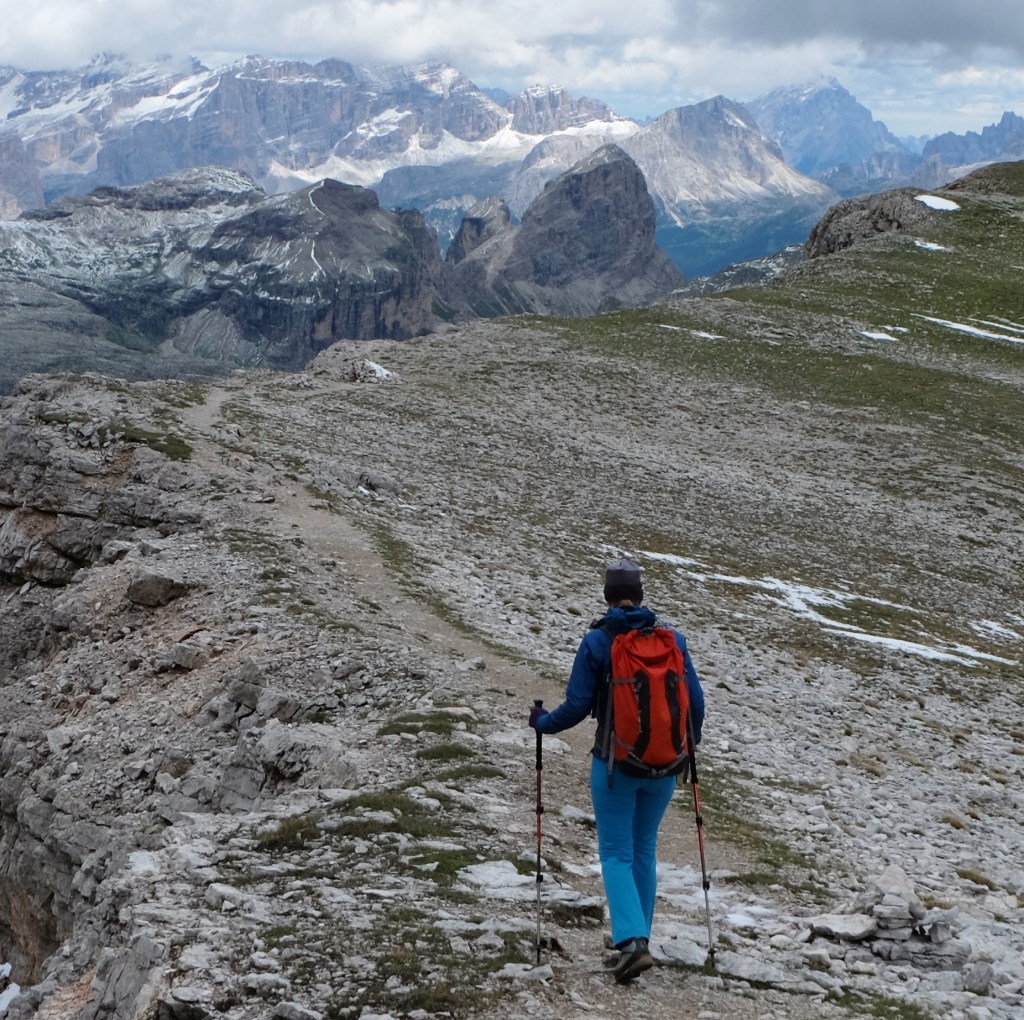
Photo Credit: Nick Haine
Suggested items
Trekking poles: I’m really tempted to class these as essential. Read the article I wrote in 2019 for the Climbers Shop / Joe Browns at https://theclimbersshopjoebrownblog.co.uk/blog/the-low-down-on-trekking-poles
Umbrella: In the alps rain tends to fall straight down, unlike the horizontal squalls we get in the UK. A wander by the river, through woodland or traditional alpine villages under your umbrella is a lovely way to enjoy a soggy day.
Phone: If possible it’s a nice courtesy to others to switch it to silent, or just vibrate. On cold days keep the phone close to your body to extend the battery life, and be aware that GPS tracking apps can also drain the batteries quickly.

Maybe don’t pack these?
Gaiters: In general alpine paths are well maintained and defined so there’s less bog trotting and trackless heather bashing than you get in the UK. Neither is there the spiny scratchy scrub of the Mediterranean. The risk from dangerous critters is also low, adders do live in these environments but are rarely seen, ticks tend to live in the longer grasses lower down the valleys. On a hot day gaiters increase the chance of heat rash. They can however be useful if there is a lot of late season snow.
Unnecessary ‘stuff’: Once you’ve packed the essentials resist the temptation to cram extras in your rucksack. The lighter it is, the more you’ll enjoy the day.
Recommended retailers
- The Climbers Shop / Joe Browns https://www.climbers-shop.com/
- Outside https://www.outside.co.uk/
- Cotswolds Outdoor. This is a much larger retailer than those above but I’ve received very knowledgeable advice from my local store. https://www.cotswoldoutdoor.com/
If you enjoyed this please enter your email address below to follow this blog and receive notifications of new posts by email.

